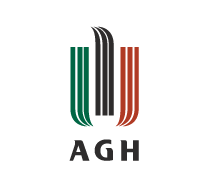|
| |
| Main page - News |
| |
| Stimulation Optimization of Unconventional Resources – Improved Modeling from First Physics
added: 15tf May 2013
|
Poland Section of Society of Petroleum Engineers want to invite you for lecture given by SPE Distinguished Lecturer Marisela Sanchez-Nagel, from Itasca Houston.
|
| |
| The Lecture will be given at AGH University of Science and Technology, Kraków, Al. Mickiewicza 30, building A-4, room 3, on 23rd May 2013 at 12:00. |
| |
| With the great success of the Barnett shale gas play and the discovery of immense global reserves of this cleaner energy source, shale gas development has become a major topic for energy companies and governmental organizations alike.
However, shale gas development remains economically challenged due to significant development issues such as proper resource and reservoir characterization, optimized completion design, and accurate estimation of both production performance and total recovery.
These challenges are often related to the extreme heterogeneity and complexity of fractured or bedded shale gas formations.
Due to the often nanodarcy permeability of the shales, multi-stage hydraulic fracturing (HF) stimulation is typically required to make shale gas wells economic.
However, billions of dollars are spent every year on HF completions using, essentially, a trial-and-error design process and/or by looking at completion and production trends from data mining efforts.
This occurs because the conventional HF design tools, most based upon simple two-dimensional analytical solutions developed more than 40 years ago, simply lack the proper physics required to understand the hydro-thermo-mechanical processes involved in the propagation of a hydraulic fracture in a naturally fractured rock mass.
Many rules-of-thumb and empirical solutions are being developed to address the limitations of the common design tools, but the predictive capacity of these models for new plays and new geological/ petrophysical conditions is, at best, very limited.
Emerging numerical techniques are available that can address hydraulic fracturing in naturally fractured formations, like shale gas,and that are based upon the proper, 'first physics' of the mechanical and flow behavior of fractured formations.
These techniques will allow the industry to gain greater insight and understanding of how natural fracture geometry and intensity, fracture hydro-mechanical properties, and stress field affect HF performance in the presence of different operational parameters such as perf cluster spacing, injection rate and pressure, fluid viscosity, and stage volume.
Furthermore, these numerical techniques can also provide a means to directly evaluate microseismicity, which offers a powerful tool to validate the HF designs and lead to better predictive tools for HF optimization. |
| |
| Marisela Sanchez-Nagel is Principal Engineer and General Manager for Itasca Houston - the O&G office of Itasca International, a global geomechanics consulting and software company.
Sanchez-Nagel holds a BS in Mining Engineering, a Master in Geotechnical Engineering, and a PhD in Geological Engineering.
As a geomechanics specialist and practitioner, for nearly 20 years she has performed engineering analyses and modeling for O&G applications such as stress analysis, 3D geomechanical modeling, borehole stability, compaction and subsidence, and the characterization and hydraulic fracture stimulation of fractured reservoirs around the world. |
| |
| Distinguished Lecturer Program started in 1961 with three lecturers the Distinguished Lecturer Program is funded primarily by the SPE Foundation through member donations and a contribution from Offshore Europe. We also appreciate the companies that allow their professionals to serve as lecturers and the additional support from AIME. More than 450 presentations are offered each year, and each section can receive up to three lectures per year. |
|



